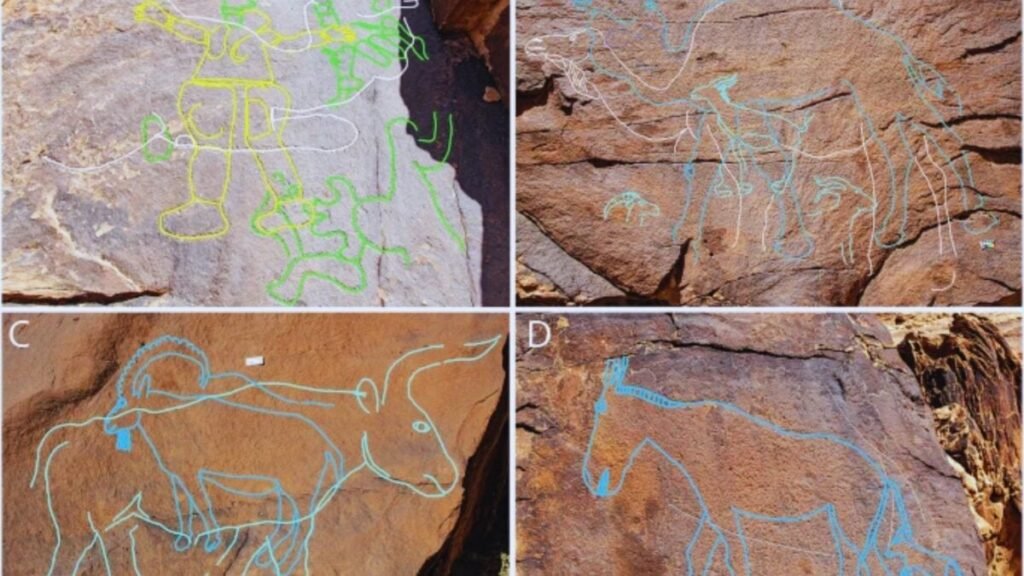Monumental Rock Art Reveals an Inhabited Oasis Beneath Arabia’s Sand: The Lost World of 12,000 Years Ago.

For millennia, the Arabian Peninsula has been known for its arid desert landscapes. However, recent research has unveiled a surprising history: deep within the Nefud Desert in northern Saudi Arabia, ancient rock art depicts life-size carvings of animals.
Arabia, when it was green
These engravings of camels, horses, mountain goats, aurochs, and gazelles, some up to three meters in length, date back 12,000 years ago when the region was lush and inhabited. Following the retreat of glaciers 15,000 years ago, a shift in climate led to a wet period, creating ponds, wetlands, and savannas that allowed for the settlement of hunter-gatherer communities.
Impossible sculptures and cultural symbols
More than 60 panels of rock art have been identified in locations like Jebel Arnaan, Jebel Mleiha, and Jebel Misma, showcasing monumental figures carved on narrow cornices only 50 centimeters wide. These intricate carvings were not merely decorations but symbolic representations of water sources, movement routes, and cultural identities, marking presence and territorial rights in a changing environment.
Water, life, and distant connections
Sediment analysis has revealed the existence of freshwater sources that sustained both animals and humans in the region. The discovery of stone points, pigments, and beads in the vicinity suggests cultural connections with communities from other regions.
A lost world under the sand
These ancient engravings provide evidence that Arabia was once a thriving oasis with human settlements. The desert landscape we see today was once a fertile, living environment, immortalized in stone engravings that challenge our understanding of the region’s history. These artworks serve as a reminder that beneath the desert sands lie lost worlds waiting to be uncovered and explored.






